How to Do Survivalist Planning on a Budget
You might have been watching the TV shows and wondering how to do Survivalist Planning on a budget.
This online guide shows how to do it and why becoming a self-reliant prepper for any emergency is right for everyone.
Survivalist planning is a plan that families can make to be self-reliant in the event of a major disaster.
It’s important to be prepared because during a time of crisis, you don’t want to have to scramble to stay alive.
When Disasters Happen Nothing is as Normal!

When disasters occur, normal routines get interrupted. That means food items are delayed on their way to the grocery stores.
There can be widespread outages of food and other necessities such as water and medication.
Before a disaster strikes, if people know it’s coming, such as a storm, you’ll often see news images of empty grocery shelves.
That’s because people who didn’t plan ahead are now rushing out in an effort to take care of themselves and their loved ones.
At best, this made rush will only result in a few days’ worth of supplies.
If there are long term electricity outages (as we’ve seen in the aftermath of major hurricanes), it can be difficult for people to get out or in.
You’ll need a way to compensate for electricity outages. Look at what happened in the aftermath of Hurricane Katrina.
Citizens who weren’t stranded by the rising waters were stranded because they didn’t have the gas to get out of town and none of the gas stations were working.
You don’t want to put off preparing because a crisis can hit at any moment.
You’ll want to be prepared in the following areas: food, water, shelter, medical needs, safety, money, and gas.
Survivalists Get a Bad Rap in the Press
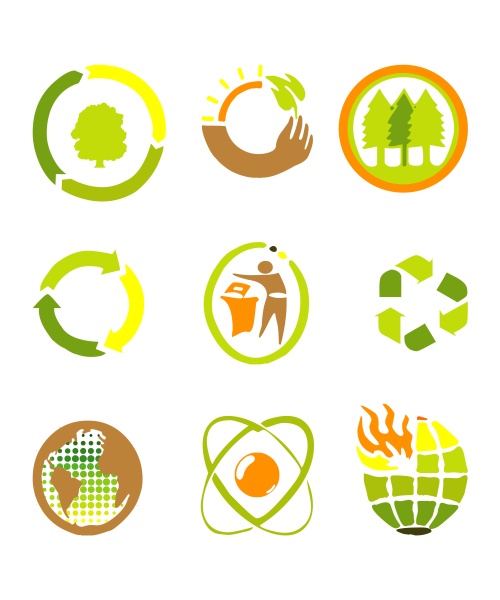
Back in the 1800s, people prepared all summer for the tough winters ahead.
Food was stored where it would keep during the cold months.
Food for livestock was also stored well in advance. No one thought of these people as weird.
They were simply being smart and trying to survive.
Though it shouldn’t, most of our impressions of people and situations today come from television.
We’ve all seen those interviews on doomsday reality TV shows where the camera is in the face of a wild-eyed individual who’s spouting some pretty weird things as he talks about survivalist planning.
Those doomsday shows deliberately seek out whatever will cause a sensation - because television is all about the ratings.
Normal people don’t drive up ratings.
Because of this slanted type of television, most survivalists get a bad rap.
Of course, once something is on television, print media dutifully follows that same line of slanted reporting and newspapers and online articles crop up full of negativity about survivalists.
Survivalists are citizens who want to be prepared.
These are people who are determined that their families aren’t going to do without survival necessities during a time of crisis.
A survivalist isn’t someone who believes that the world is on the edge of destruction.
Rather, a survivalist is a smart individual who knows that disasters happen.
Nature has proven time and again how unpredictable it can be.
A survivalist knows the best way to respect that unpredictability is to be prepared.
Natural disasters aren’t the only reason that you need to be prepared to be self-reliant.
Look at what happened in Greece. The government decided that the citizens were going to be their backup bailout plan for the country’s debt.
Once a plan was announced that the government was going to take 10% of the citizens’ bank funds, panic and protests ensued.
There was a mad run on the ATMs as people scrambled to pull their money out.
Because of the surge of withdrawals, the ATMs ran out of money.
Many people considered this move an illegal government confiscation of private funds.
The crisis reached the stage where the government closed banks temporarily to keep people from taking out all their money.
Does the government have that kind of control?
Do they have that kind of authority? Yes.
The same situation that happened in Greece could happen anywhere - and you don’t want to be caught off guard - especially if you’re a parent.
A survivalist hopes that a personal, natural or government disaster won’t happen, but takes the proper steps to be able to survive in case it does.
You Don’t Have to Be Rich to Start Survivalist Planning
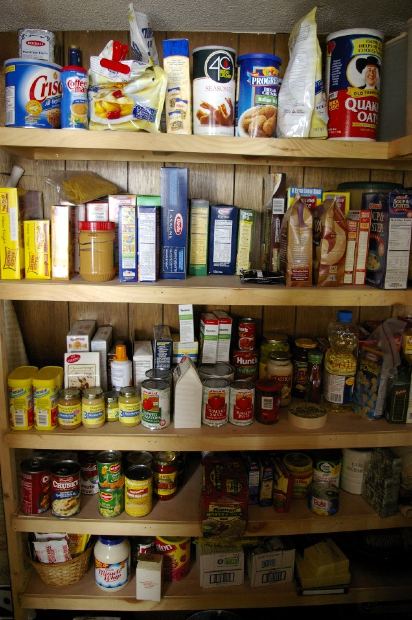
Planning to survive in the event of a crisis is something that all citizens should do.
You don’t have to have loads of money in order to start putting a survivalist plan in motion.
In fact, when a crisis hits, studies have shown that it’s often those with less income that fare the worst.
You can start your survivalist planning by making small purchases now.
What you want to do is to start making what’s called short term packs.
These are items that you must have on hand that are essential for survival.
Add to these supplies as you go along and in the long run, you’ll end up saving money.
Self-sufficiency is a skill that always pays back in full those who utilize it.
People that have food in storage and people that can live off the land - these are the people who don’t have to worry when disasters hit because they know their basics needs are going to be met.
In your packs, you’re going to want to have food that will keep.
Nutrition bars, canned meats, canned fruits and vegetables are foods that will keep for years if you store them properly.
You can also start a garden and grow your own fruits and vegetables.
This way, you’ll be able to can the food you grow and stock up that way, too. You can even store some meat for the long haul.
Put together enough water for everyone in your family.
You should have a gallon of water set aside for each person for each day that it will be needed.
Water will also keep in storage. You’ll also want to have on hand some water purification tablets.
Have the medication that’s needed for each family member.
Whenever a natural disaster hits, pharmacies and doctor’s offices are also closed and you won’t have access to medicine if you run out, so make sure you keep a three month supply of the medicine.
You can do this through a mail order pharmacy that will give you three months’ worth of a prescription at once.
You’re going to use them anyway, so having them on hand for a disaster is just smart preparation.
Stock up on baby supplies like diapers, baby wipes and formula a little at a time.
Have extra clothing for the baby as well as for each member of your family.
Make sure you have baby medicine in case of a fever, too.
Store toiletries as well. You’ll want shampoo, deodorant, razors, soap, toothpaste, toothbrushes and toilet paper.
Those would be necessities but you can also store luxury items as well, such as lotions and facial cleansers.
Having a first aid kit ready and set aside is important.
Make sure the kit has plenty of waterproof bandages, including wound dressings.
You’ll want antibiotic ointment, alcohol wipes and Calamine lotion.
Pack insect repellent, scissors, ibuprofen, aspirin and burn cream.
Add to the kit scissors, a surgical field pack, safety pins, wraps for sprains, tweezers and a magnifying glass.
Don’t forget to pack waterproof matches, blankets and sleeping bags.
Have the lighting you need, too - such as flashlights like the solar powered ones, candles and kerosene lamps.
An emergency solar radio can help keep you up to date on the latest cleanup and restoration efforts going on in your area after a disaster, so have one on hand.
You might want to also invest in a solar powered charging station for your cell phones.
If you were to try to plan all of this at once, these supplies would be very expensive, but by breaking the list down and steadily adding items week after week, your supplies will soon be ready.
What you can do is every time you go to the grocery store, set aside a certain amount of money that’s earmarked for emergency events.
Use that money to stock up only on things you need from your preparedness list.
Spending even a small amount will help you be prepared.
Even if all you manage to stock up for is a couple of weeks - over time, you’ll still be better off than you would be if you hadn’t taken those steps.
Preparing to survive through a disaster doesn’t have to be an exercise in gloom and doom - you can get everyone in the family involved.
You Can Make It a Fun Family Experience

One of the biggest mistakes parents make is thinking that their children will be scared if they get them involved in survivalist planning.
But children are a lot wiser than most parents give them credit for.
They can pick up on tension when tough times hit.
Kids are more afraid when disasters happen and the parents are stressed out because the parent doesn’t know where the next meal is going to come from.
Knowing that their family is prepared during a disaster and that there will be food and shelter, warmth and even fun during the tough days will ease their minds.
Even more than themselves, kids also worry about their parents and their siblings.
So knowing that the whole family will be cared for can turn a potentially traumatic situation for them into a fun learning experience instead.
You can get your children involved by getting their help when it comes to picking out supplies.
Your child can man the preparedness list and help cross off items every time you bring home one of the needed supplies.
You can even create a fun chart and add gold stars every time you reach a certain supply goal.
Take the kids with you and let them pick out the entertainment that you’ll want to have on hand in the event of a disaster.
Let them choose which board games or card games they want. Have them be the ones to choose a family puzzle.
Not only will they like being in charge of the entertainment, but spending time together as a family doing something fun, even in the event of a disaster, is reassuring to children that their family is still okay.
Let your kids get involved by picking out the seeds needed to plant a garden, too.
Using seeds is also a very budget conscious way to prepare for emergency food needs.
You’ll want to plan the amount of seeds based on what you think it will take to keep your family afloat for a year.
Your children can have fun picking out their favorite seeds and watching them grown into plants and develop into fruits, vegetable or grains.
Let them create a little scarecrow for the family garden, too. Keep in mind that to kids, as long as the family is okay, they feel okay.
So as you’re preparing for the event of any emergency, make sure that you’re presenting it in a positive light.
For example, even though adults don’t like to be without electricity, kids adapt faster and will see the lack of electricity as an adventure.
By preparing ahead of time, you can use the situation as a learning experience.
As you buy kerosene lamps, you can talk about how much children once did their homework by the light of a kerosene lamp.
When you get a compact stove for your preparedness supply, you can talk about how people used to prepare their meals over open campfires or on wood stoves.
Using Animals in Your Sustainable Living Efforts

When you become interested in sustainable living, you may want to add animals to your practices.
There are many ways you can use animals on your own property to help become self-reliant and sustainable.
You need to know some of the most common animals used for sustainable living practices and how you might be able to work with them.
Some animals are used for meat, while others are used for eggs, milk, and their pelts or skins.
Honoring the Animal
It’s important to note that using animals requires you to be considerate of the animal’s needs and provide a healthy and happy environment for it.
When you choose to butcher animals, you should make sure you get proper training so that you cause little fear or pain to them.
With sustainable living, you’ll also want to make use of as much of the animal as possible so that it doesn’t go to waste. Honoring the animal’s sacrifice means using it well.
Chickens
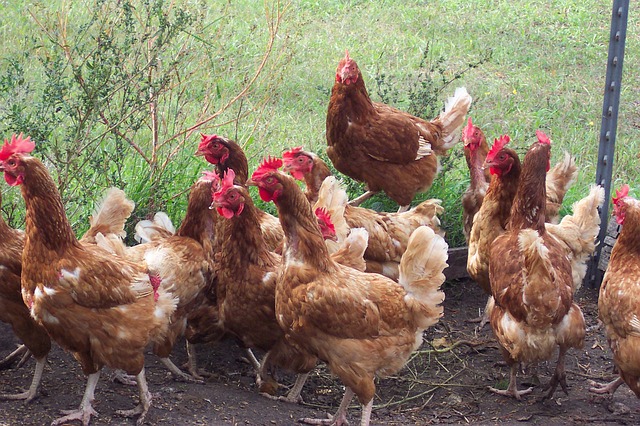
If you’re new to working with animals, raising chickens is a great way to begin learning.
Chickens are relatively simple to take care of and require a small amount of space.
They can also provide regular eggs and even meat if you choose to butcher them and eat them.
You’ll need to make sure that you provide a coop for chickens where they can be safe from predators and roost at night.
Chickens need room to roam and can help cut down on bugs as they eat them along with feed that you supply.
It’s best to choose an organic feed that’s free from chemicals and additives.
You’ll want to do your homework to figure out how many chickens will fit into the coop you choose.
That will depend on the size of the coop and the breed of chickens.
You can buy chicks online and have them shipped to your home.
You’ll need to be prepared to take care of chicks for a few weeks after their arrival.
They need warm temperatures, clean water, and bedding.
As they grow, they’ll become easier to care for.
Many urban areas allow chickens, but make sure you check your local ordinances.
You may be allowed to have chickens, but not roosters in the city limits.
As you care for your chickens, it’s important to learn from experts such as agriculture extension agents, local farmers, or even getting online help.
Chickens can provide eggs, can be harvested for meat, and their feathers can be used for pillows or blankets.
Older chickens that don’t have tender meat can be used to make chicken stock for use later.
Rabbits

Rabbits are also easy to care for and can provide meat for your family.
They require a hutch where they can live comfortably and have room to move around.
You’ll also need to feed them and provide them with high quality food and fresh vegetables.
Rabbits also need a constant supply of alfalfa or timothy hay.
You’ll want to research rabbit breeds so that you can choose the best breed for your area and the meat you’d like to produce.
If you begin with two female and one male rabbit, you can produce more than 40 rabbits a year for meat.
Rabbits are best eaten when they are 8-12 weeks old.
The younger they are, the more tender they are.
When the rabbits reach about six weeks old, you can separate them from their parents.
Then you can wait until it’s time to harvest the meat.
When the larger, adult rabbits reach two or three years of age, you can butcher them.
Older rabbits are better in stew because they aren’t as tender. Rabbits can also be used for their fur.
Once they’re butchered and skinned for meat, you can tan the rabbit’s hides and use them for warm clothing.
Rabbits are a relatively inexpensive investment if you want to begin working to raise and harvest your own meat.
It helps to take a class to learn how to butcher them properly.
Goats

Goats are fairly easy animals to take care of and they can produce a great deal of food for you.
There are two kinds of goats – goats for meat and goats for milk.
Goat isn’t commonly eaten in the United States, but it’s very common in other countries.
You’ll want to choose a breed that’s specifically designed for your purposes. Look for one that’s purebred.
You can raise approximately eight goats on the same feed it would take to raise one cow.
Goats need little in the way of food if they’re able to graze.
You may also need to provide hay, oats, and a vitamin supplement.
Housing for goats is also pretty simple – you’ll need an area where they can be dry and where they won’t get too cold.
Goats are very good at climbing, so you’ll need a fence that has barbed or electric wire to keep them in.
Goats are typically very friendly animals to have on your property.
Some good goat breeds for meat include Texmaster, Moneymaker, and Savanna.
Good goat breeds for milk include Saanen, Alpine, and Togenburgs.
You’ll want to learn more about specific breeds and what will work best in your area.
Goat milk can be used for drinking and for making cheese.
Many people who find cow’s milk problematic find that goat’s milk is a good substitute.
In order to produce milk, your goats will need to be bred once a year.
Your goat will need to feed her kids, but you can still milk her once a day.
The best method is to keep the kids separate from her at night and milk her once in the morning.
Then the rest of the day the kids can nurse when they choose.
If you continue to milk her, she can produce milk for approximately 10 months.
That’s a good supply of milk for a family.
You can have more goats if you’d like more milk for your use or to sell.
When it comes to meat goats, the best time for butchering is between five and nine months of age.
You can learn to do this yourself or take the goat to a meat processor.
After butchering a goat, you can keep the hide and tan it for use.
Learn more here about keeping goats healthy and happy.
Pigs
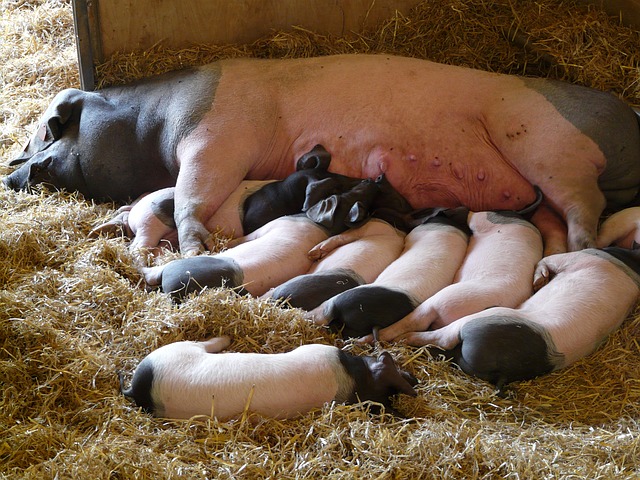
Pigs can also be raised to use for meat. Pigs will need at least a tenth of an acre for pasture.
You can also grow them in an enclosure that’s at least 100 square feet - such as a barn or a pen.
You’ll also need food for your pig. Unlike what you see in movies, it’s best not to feed pigs just whatever is left over from your own meals.
They need a diet full of vitamins and minerals.
It’s best to give them organic foods and allow them to graze on grass.
They also need plenty of access to clean water.
You’ll want to choose a piglet that’s a good breed for meat.
You can buy them at farms or from auctions.
Some of the best breed choices include Berkshire, Yorkshire, and Hereford. But there are many choices.
You’ll want to research what will live best in your area and grow to the preferred size.
In general, pigs usually are ready for slaughter when they reach approximately 225 pounds, though this can vary based on weight.
You can learn to butcher them yourself or take them to a meat processor.
Each pig will give you around 150 pounds of meat. Again, this is an average and will depend on your pigs.
Once a pig is processed into different cuts, you can freeze them for long-term use.
Some people also choose to sell meat as a way to make money and profit from pig production.
Cows
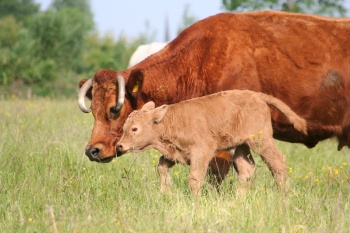
Many people enjoy raising cows for either milk or meat.
Raising your own cows on a grass diet without antibiotics or added hormones make the meat and milk much better for your body.
The best breeds for dairy cows tend to be Jersey, Guernsey, and Holstein.
For beef cows, look for Angus or Hereford cows.
There are other breeds that may be better for your needs, so do your homework before settling on one type.
Cows will need a source of grass and in winter months will need hay.
Each cow will need about a half a bale of hay per day.
Your cow will also need to be confined with a fence made from barbed wire.
You can also use an electric fence to keep your cow from leaving home.
Each cow will need about two acres of pasture in order to get enough nutrition.
If you live in a drier area, your cow may need even more space.
For milk cows, you’ll need to breed your cow in order for her to produce milk.
One cow can give you eight to ten gallons of milk each day.
This will allow you to have plenty of milk for drinking and making other dairy products or for selling.
For meat cows, you can learn to do the butchering yourself.
However, most people will take a cow to be processed and divided into different cuts of meat and ground beef.
One cow is usually more than enough meat for an average family.
You may even consider selling half of the cow so that you can make back some of the money you’ve invested in raising your cow and processing it.
Fish
When you think of farm animals, fish don’t usually make the top of the list.
But fish can be very good food that you can raise right on your property.
The best breeds of fish for farming include catfish, bass, bluegill, and carp.
In order to raise any of these fish, you’ll need a barrel that holds at least fifty gallons of water.
This will hold about 40 fish that you can harvest for food.
You’ll want to research the specifics for putting together an aquarium based on the breed you choose.
You’ll be able to feed your fish commercial food or you can feed them worms.
For 40 fish, you’ll need at least 50-100 worms each day when they are young and even more as they get older.
You can either clean and prepare fish all at once or stagger your use by taking a few adults out and replacing them with younger fish.
This gives you a regular supply of fish. If you do it all at once, you’ll need to freeze them.
It takes about 2 months for fish to grow into adulthood and be ready for eating.
You can start over every 2 months with a new group so that you have a continuous supply of fish to eat.
Researching Your Best Options
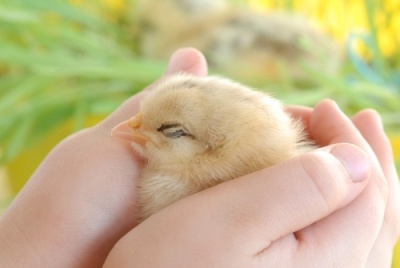
If you’ve never raised your own animals for food, it’s a good idea to start small with chickens, rabbits, or even fish.
Don’t try to do too much at once and become overwhelmed by the process.
Once you’ve mastered one animal, you can add another.
It’s also important to do a lot of research before deciding on an animal and breed.
You need to do a lot of preparation and be prepared for feeding and even medical care if necessary.
A great place to start is with your local agriculture extension office.
This office helps local people figure out what to grow and you can even take educational classes to learn about animal management and harvesting.
This guide may have sparked your interest in a particular type of animal, but now you’ll need to get much more depth of information in order to carry out the process of growing and harvesting animals for food.
Growing your own animals can help you save on the cost of food.
It can also ensure that you have meat or milk that’s free from chemicals, antibiotics, and hormones.
You can also feel good that your animal has a good life and is treated with care and respect, unlike many animals raised on corporate farms.
Raising animals is a great way to develop a sustainable living homestead.
It does take a lot of work, but many people feel that the work is well worth it for quality meat or milk.
You Gain Peace of Mind
There have been several snowstorms that have gone down in history as being pretty severe.
One hit Chicago in 2011 that dumped over 20 inches of snow in certain areas of the city.
When that storm hit, electricity went out, business shut down and a lot of people ended up stuck in their cars, unable to go anywhere. That was a major snowstorm.
However, even in less severe snowstorms, people rush the grocery store (much like the people rushed the ATMs in Greece) and the shelves are emptied of all of the basic necessities and even empty of the not so basic necessities.
Why? Because disasters and threats of disasters create panic in people.
Now imagine what would happen in the event of a real disaster.
If a simple snowstorm can create panic and a rush on the stores, what would happen if the government had a breakdown?
Or another hurricane the size of Katrina hit?
You can bet that utter chaos would take over and that getting even the basic supplies would be difficult.
You don’t want to be in that predicament.
If you’re already prepared, you won’t have to deal with that kind of stress and fear.
By stocking what you need well in advance of the event, you’ll have the food you need on hand to feed yourself, your family members and any family pets or livestock.
Getting ready for natural or man-made disasters means that when the water supply you’re used to having is cut off, you’ll still be okay because you’ll have your own supply of water.
Even if the electricity shuts off, you’ll be prepared by having solar powered devices, oil lamps and long lasting flashlights.
While everyone else is in the dark, your family will be less scared and more comforted.
When disasters hit, schools often shut down - and if the disaster is big enough, you won’t have any idea about when the school will be back up and running.
By having educational supplies, your children will still be able to keep up with their studies.
Protecting yourself can also go a long way to giving you peace of mind.
Whenever there’s a disaster of any kind, a period of lawlessness occurs as people begin looting.
Sometimes, that taking of others’ belongings can turn violent.
When disasters happen, the law of the city is also affected.
Response time from the police can be delayed or in some cases, not answered at all.
You want to make sure that you have the means and the knowledge to prevent anyone from harming your family during the time of crisis.
Remember that preparing ahead of time in all areas of survivalist planning puts you on the offensive, which is always a better position to be in than defense.
Don’t worry about what other people think – just take this on as a method for keeping your family safe and prepared in the future.
Below are some of the kinds of prepper supplies you can stock up on when you are doing survivalist planning on a budget:
Important!
A survivalist isn’t someone who believes that the world is on the edge of destruction.
Rather, a survivalist is a smart individual who knows that disasters happen.
Nature has proven time and again how unpredictable it can be.
A survivalist knows the best way to respect that unpredictability is to be prepared.
Continue to Research More Resources
Here are some survivalist planning on a budget guide books and products you can buy online that I think look very useful:
Below here I'm featuring more pages with helpful how-to-do-it tips on survivalist planning on a budget .
Feel free to submit your own story or article about preppers and planning for disasters, and I will create your own page here with your contribution for the community to read.
Latest Tips for How To Do It Yourself: Going Green
Do you have a tip you want to contribute here? Share it!
Read the latest updates & how-to tips here:
Click the Title links below to see the latest how to do it tips and contributions to this page....
Developing a Strong Mind When Everyone Else is Losing Theirs
People are panicking. They’re stressed and hoarding and panic buying. Get on social media, and everyone and their plumber is going on and on about the …
Coping with Food Shortages During a Pandemic
The current food shortages in the US are not due to a broken supply chain or production issues. The empty store shelves are a result of people panic buying …
Safety Measures To Take When Self-Isolation is Not an Option
Many countries are already on a nationwide lockdown with only essential services in operation. Several have recommended self-isolation as a precautionary …
Running Out of Toilet Paper? You NEED to Read This!
The current COVID-19 pandemic has led to a very strange phenomenon where toilet paper (affectionately known as ‘loo roll’ in the UK) seems to be the first …
Supplies That Should Be Part Of Your Disaster Preparedness And EMERGENCY CHECKLLIST
No matter where you live, what your personal situation is, or what type of disasters you may be facing, there are some basic supplies everyone should have …
Survival Food Storage Will Come In Handy During A Disaster
When you are sheltering in place, are planning on staying in a shelter, or even dealing with the possibility of being stuck out on the road, having food …
How to Choose a Greenhouse That Will Meet Your Current and Future Needs
Having a greenhouse can expand the growing time of your garden. You can grow fresh fruit, herbs and vegetables all year long with the right greenhouse. …
Sustainable Living & Survivalist Planning: Taking Care of Livestock in Your Backyard
Depending on where you live you may be allowed to have some livestock right in your backyard. Many cities and towns are now allowing people to have chickens, …
Sustainable Living Tips For Ways to Reduce Food Waste
Most families have an enormous amount of food waste. Take a look at anyone’s garbage and the amount thrown away would make some people literally cry. …
Where to Find Organic Seeds For Sustainable Living
When you are doing survivalist planning on a budget, or simply focusing on healthy and sustainable living, it’s very important to start using organic seeds …
Ways to Conserve Water For Sustainable Living
Conserving water is easy if you know what to do. If you are giving it thought as you go through your day, you’ll find many ways to save water that aren’t …
How to Reduce Indoor Toxins For A Sustainable Living Lifestyle
It might sound frightening but your home might be awash in dangerous toxins that you introduce into your home. Thankfully with just a few changes you can …
Sustainable Living Requires Natural Pest Control
You don’t have to use chemicals to get rid of pests in your home, garden or even to protect your family while camping. Using non-chemical choices is …
How to Produce and Conserve Energy in the Home For Sustainable Living Sustainable Living
There are two ways to save money around energy. One requires finding alternative ways to produce energy and the other involves finding ways to conserve …
Sustainable Living Small Choices That Make a Big Impact
One person can make a huge difference on the world around them by just making a few small changes in their life. These changes really don’t seem to amount …
Pandemic Threat Assessment Tips for Preppers
Many survivalists prepare for natural disasters such as hurricanes, earthquakes, terrorist attacks, etc. However, the idea of a pandemic doesn’t really …

"Power Tips" magazine is back!
You Get A Free Complete Self Help Report delivered to your email box every edition, plus you get a free PLR article and other great gifts!
SUBSCRIBE BELOW ... I promise you will want to USE what you learn!
I really want to know what you think of this site, this page, and to hear your tips or suggestions about it.
So please share your story or simply add a Comment in the comment box.
If you feel that the information on this page has been useful to you please give it a Like or share it with your friends - thanks!!
"You are a life Saver!!
I recently discovered this site and I can tell you that my life has not been the same. I now come here EVERYDAY and spend at least 1 hour.
I used to spend that time browsing online fashion and beauty
magazine which just means that I spend more. Now I have replaced that
habit with coming here.
In future I will think about contributing articles as well. Thank you! Thank you!! Thank you!!! and God bless"
Contact Us | About Us | Terms of Use | Privacy Policy | FAQ | Testimonials
Amazon and the Amazon logo are trademarks of Amazon.com, Inc. or its affiliates. As an Amazon Associate I earn from qualifying purchases. Product prices and availability are accurate as of the date/time
indicated and are subject to change. Any price and availability
information displayed on [relevant Amazon Site(s), as applicable] at the
time of purchase will apply to the purchase of this product.
Back to HOME PAGE of this survivalist planning on a budget section of the site.


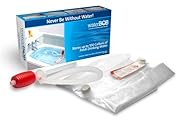

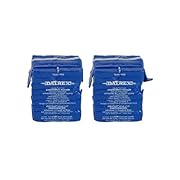
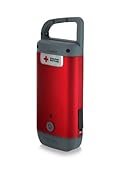
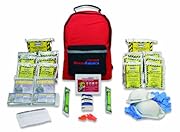

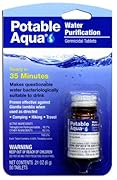


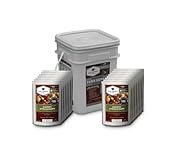
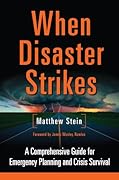

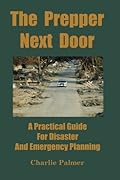



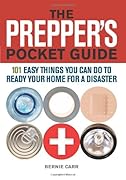
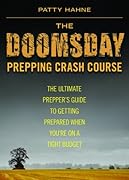
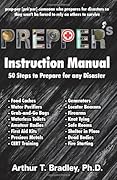


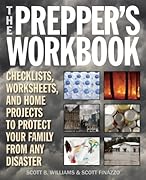









New! Comments
Have your say about what you just read! Leave me a comment in the box below.